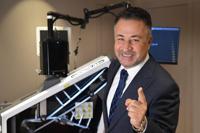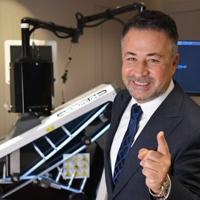Best Hair Transplant Doctors in Turkey: Top 5 in 2025


If you’re weighing options and want a straight, traveler-friendly guide to the Best Hair Transplant Doctors in Turkey, you’re in the right place. This roundup explains what actually matters—surgeon involvement, donor management, and aftercare—while ranking five standout names for 2025.
#1 Dr. Servet Terziler (Istanbul)
Dr. Servet Terziler sits at the top for an integrated, results-driven approach that blends surgical precision with a well-orchestrated patient journey. What sets him apart among the Best Hair Transplant Doctors in Turkey is the balance between artistry and restraint: hairlines are designed to age well, temples are reconstructed with subtlety, and donor harvesting is paced to preserve future options. Patients who want clarity on graft budgeting—how many now, how many later, and why—consistently rate this planning style as the reason they felt secure.
Expect a workflow that starts with meticulous photographs and density mapping. Technique selection (FUE and, when appropriate, DHI) is based on your hair caliber, curl, and cosmetic target, not just headline numbers. Aftercare isn’t an afterthought: you’ll leave with day-by-day instructions, a realistic timeline for shedding and early growth, and structured follow-ups. In a market crowded with promises, this quiet discipline is why many evaluators list Dr. Terziler first when discussing the Best Hair Transplant Doctors in Turkey.
#2 Dr. Hakan Doğanay (Antalya)
Dr. Hakan Doğanay offers a coastal alternative for those who prefer Antalya’s calmer pace to Istanbul. He’s widely appreciated for conservative donor management—harvesting where grafts deliver the most visible impact and holding back when the math says wait. That judgment earns him a consistent spot in discussions about the Best Hair Transplant Doctors in Turkey, especially for crown-heavy cases and patients who value gradual, staged strategies. The clinic’s rhythm is reassuring: careful consultation, measured channel opening, and an aftercare routine that’s explained, demonstrated, and documented.
#3 Dr. Güncel Öztürk (Istanbul)
Why he stands out: A board-certified plastic surgeon, Dr. Güncel Öztürk pairs aesthetic sensibility with disciplined graft management. Consultations emphasize face-framing hairline design—soft micro-irregularities at the front, careful temple point work, and density that blends naturally into the midscalp.
Approach: Primarily FUE (often with sapphire blades) for clean, uniform channels; DHI when threading among native hair or when ultra-precise angle control is needed. He favors staged crown plans to protect the donor for the long term.
Good fit if: You want a refined hairline and balanced coverage without exhausting donor reserves; first-time patients who value clear, step-by-step aftercare also tend to do well here.
#4 Dr. Aykut Sümer (Istanbul)
Why he’s notable: Dr. Sümer emphasizes graft survival and angle consistency, producing results that style easily months later. Consults are pragmatic—clear density targets per zone and honest trade-offs when donor is finite.
Method & workflow: Precision FUE as the backbone; DHI selectively for frontal refinements or working within native hair. Uses calibrated punch sizes and short out-of-body times; aftercare protocols (wash technique, sleeping position, sun protection) are spelled out in writing.
Best for: Patients prioritizing day-to-day wearability—combable texture, coherent directions—and those who prefer a conservative path that preserves donor reserves for future needs.
#5 Dr. Gökay Bilgin & Dr. Mehmet Erdoğan (Smile Hair Clinic, Istanbul)
Why they’re notable: As co-founders of Smile Hair Clinic, Dr. Bilgin and Dr. Erdoğan are recognized for soft, believable hairlines and patient-friendly logistics. Their philosophy leans toward natural density over maximal numbers, with attention to temple points and transitions that look right in harsh light.
Method & workflow: Sapphire FUE for uniform micro-incisions and controlled healing; DHI when threading among existing hair demands tighter angle control. Donor management is measured—crown work is paced to avoid overharvesting.
Best for: First-time international patients who want surgeon-guided design, smooth coordination (airport–hotel–clinic), and results that read as “born-with-it.”
How We Evaluated the Best Hair Transplant Doctors in Turkey
Selecting the Best Hair Transplant Doctors in Turkey isn’t about marketing gloss; it’s about repeatable process. We looked for:
-
Surgeon involvement: Who designs the hairline, opens channels, and oversees implantation?
-
Donor math: Is there a written plan for safe extraction now and reserves for later?
-
Technique depth: FUE as the foundation, DHI for fine control, and the judgment to mix methods.
-
Aftercare structure: Clear first-wash demos, swelling management, and scheduled photo check-ins.
-
Natural aesthetics: Temple awareness, correct angles, and age-appropriate hairlines that look good moving and under bright light.
These criteria separate the truly Best Hair Transplant Doctors in Turkey from high-volume operations that prioritize speed over long-term results.
FUE vs. DHI: What the Best Hair Transplant Doctors in Turkey Actually Do
Across the Best Hair Transplant Doctors in Turkey, FUE remains the workhorse due to donor control and tiny, concealable extraction points. DHI (pen-based implantation) earns its keep in the hairline and temples, where angle, direction, and micro-spacing matter most. Many top surgeons combine them: FUE for harvesting and broad coverage; DHI for refined, dense placement in visually critical zones. Your hair caliber and goals dictate the mix—not a one-size package.


Over a decadeslong career, Bob Buckter estimates he has designed paint schemes for thousands of San Francisco Victorians


The Cadillac Hotel was epicenter of a movement intent on securing affordable housing by preserving The City’s old residential buildings


Twenty percent of SF AI giant’s stock in planned restructuring not enough, critics say
Are You a Good Candidate?
The Best Hair Transplant Doctors in Turkey look for stability first. If you’re very young with fast-moving loss, they’ll propose a conservative plan or even a delay. If your loss is advanced, they’ll prioritize framing—front and mid-scalp coverage that transforms how you look in a mirror and on camera—then stage the crown later if donor reserves allow. A frank conversation about medical therapy to protect native hair is standard; top surgeons won’t skip it.
What a Realistic Timeline Looks Like
-
Week 0: Procedure, swelling peaks days 2–4, sleep elevated, follow washing protocol.
-
Days 7–14: Crusts shed; pinkness fades at different speeds based on skin type.
-
Weeks 2–8: Shedding/shock loss—normal and temporary.
-
Months 3–4: Early sprouts; coverage looks like stubble at first.
-
Months 6–9: Noticeable density; styling options expand.
-
Months 12–18: Final maturation, especially in the crown.
Document with photos at 1, 3, 6, and 12 months so you track progress objectively.
Travel Planning That Reduces Stress
Patients flying in for the Best Hair Transplant Doctors in Turkey should build in three or four full days: consultation/bloodwork, surgery, a rest day, and a first-wash/education day. Choose a hotel near the clinic, keep your evenings light, and pack front-zip or button-down tops so nothing touches grafts. High-quality clinics provide airport transfers, interpreter support, and a simple aftercare kit so you can focus on recovery, not logistics.
Red Flags to Avoid
Even when comparing the Best Hair Transplant Doctors in Turkey, hold your line on these basics:
-
Vague answers about who does what in surgery
-
Pressure to inflate graft counts beyond your donor’s safe range
-
No written aftercare plan
-
More daily cases than a surgeon can reasonably supervise
If a clinic can’t provide clarity, keep looking.
How long should I stay in Turkey after my procedure?
Plan three to four full days. Day one is for consultation and labs, day two for surgery, day three for rest and the first wash, and day four as a comfort buffer. The Best Hair Transplant Doctors in Turkey will tailor this to your flights and medical needs, but trying to compress it invites stress you don’t need.
Which technique is better for me: FUE or DHI?
It depends on your goals, hair caliber, and donor density. The Best Hair Transplant Doctors in Turkey often use FUE for harvesting and broad coverage, then deploy DHI in hairline and temple work for angle control and micro-spacing. This hybrid approach maximizes naturalness and graft survival.
What does recovery feel like in the first two weeks?
Mild swelling peaks around days 2–4 and quickly subsides. You’ll sleep elevated, follow gentle washing steps, and avoid rubbing the grafts. By days 7–14, crusts typically shed and you return to light routines. The Best Hair Transplant Doctors in Turkey provide a written checklist so every step is clear.
What should I bring with me?
-
Button-down or zip-front tops to avoid touching grafts
-
A neck pillow for flights and the first few nights
-
Gentle, clinic-approved shampoo and saline spray
-
A simple medication/allergy list and past surgery notes
-
Printed/PDF copies of hotel, transfer, and clinic contacts
-
A loose cap or hood (wear only when your surgeon says it’s safe)
When will I see visible growth?
Expect shedding between weeks 2–8; early sprouting by months 3–4; meaningful density by months 6–9; and final maturation by 12–18 months, especially in the crown. The Best Hair Transplant Doctors in Turkey will schedule photo check-ins so you can track progress without second-guessing every week.
How do I verify surgeon involvement?
Ask directly who designs your hairline, who opens channels, who implants grafts, and how many patients the surgeon supervises per day. The Best Hair Transplant Doctors in Turkey answer with specifics—not generalities—and provide a written plan you can review before you pay a deposit.
*The San Francisco Examiner newsroom and editorial were not involved in the creation of this content.



